Join More Than 50,000+ Subscribers and get latest camera news and rumors
NEW CAMERA VIDEOS ON YOUTUBE
|
By admin, on January 18th, 2025
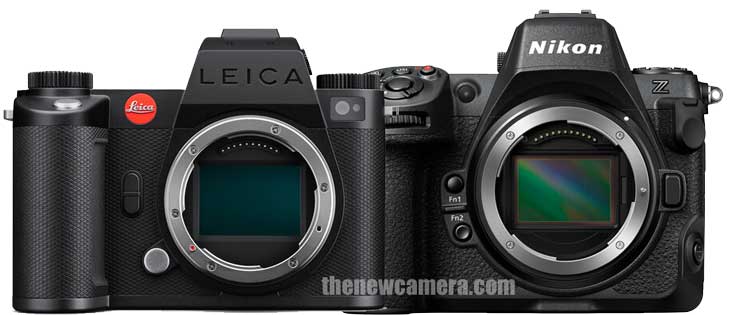
Nikon Z8 versus Leica SL-3 S: Which is the Best Camera Among These Two? If you are planning to buy the Leica SL3 S camera, you must first look at the Z8 core specification comparison table before making a decision.
Design Comparison
| Feature |
Nikon Z8 |
Leica SL3-S |
| Lens Mount |
Nikon Z |
L-Mount |
| Build Material |
Magnesium Alloy |
Aluminum, Magnesium Alloy |
| Dimensions (W x H x D) |
5.7 x 4.7 x 3.3″ (144 x 118.5 x 83 mm) |
Not Specified |
| Weight |
2.0 lb (910 g, with battery and recording media) |
4.715625 lb / 2139 g (With Battery)
1.7 lb / 768 g (Body Only) |
| Display Type |
3.2″ 4-Axis Tilting Touchscreen LCD, 2,100,000 dots |
3.2″ Tilting Touchscreen LCD, 2,332,800 dots |
| Viewfinder Type |
0.5″ OLED, 3,690,000 dots, Approx. 0.8x Magnification |
OLED, 5,760,000 dots, Approx. 0.76x Magnification |
| Eye Point |
23 mm |
21 mm |
| Weather Sealing |
Yes |
Yes |
| Wireless Connectivity |
Wi-Fi 5 (2.4 / 5 GHz), Bluetooth 5.0 |
2.4 GHz MIMO Wi-Fi, Bluetooth 5.0 |
| Dual Card Slots |
CFexpress Type B / XQD + SD (UHS-II) |
1x CFexpress Type B, 1x SD (UHS-II) |
| GPS |
Yes (via smartphone) |
Yes (via smartphone) |
Which camera is better for longer hours of work, like weddings and events lasting hours, the Leica SL3 S or Nikon Z8?
In the design comparison, it is visible that the Leica is built like a tank, heavier, but at the same time, the electronic viewfinder and the display part of the camera are of more premium quality. For more prolonged shooting, such as during weddings and events lasting over 7-8 hours or more, it’s recommended to hold a camera that makes you comfortable for longer hours of work, like the Nikon Z8.
Photography Comparison
| Feature |
Leica SL3-S |
Nikon Z8 |
| Sensor Resolution |
24.6 MP (Effective) |
45.7 MP (Effective) |
Sensor Tech
|
BSI CMOS |
STACKED BSI CMOS |
| Sensor Type |
Full-Frame |
Full-Frame |
| ISO Range |
100 to 200,000 (manual) |
64 to 25,600 (Extended: 32 to 102,400) |
| Continuous Shooting |
Up to 30 fps |
Up to 20 fps Raw, 30 fps JPEG Shooting |
Image Stabilization
|
Upto 5 – Stops (max) |
5.5 (Max 6 Stops with VR Lens) + AI IS |
| Autofocus Points |
779 Points (Phase + Contrast Detection) |
493 Points (Phase Detection Only) + AI AF tracking Modes |
| White Balance Options |
Auto, Cloudy, Color Temp, Daylight, Flash, Fluorescent, Manual |
Auto, Cloudy, Direct Sunlight, Flash, Fluorescent, Incandescent, Custom |
| Shutter Speed |
Mechanical: 1/8000 to 30 sec; Electronic: 1/16000 to 60 sec |
Electronic: 1/32000 to 30 sec; Bulb Mode Supported |
| Metering Modes |
Center-Weighted, Highlight Weighted, Multi-Zone, Spot |
Center-Weighted, Highlight Weighted, Matrix, Spot |
| Aspect Ratios |
3:2, 16:9, 17:9 |
1:1, 3:2, 16:9 |
| Image File Format |
DNG, JPEG |
JPEG, RAW |
| Bit Depth |
14-Bit |
14-Bit |
| Self-Timer |
2/5/10/20-Second Delay |
2/5/10/20-Second Delay |
| Built-In ND Filter |
No |
No |
| Capture Type |
Stills & Video |
Stills & Video |
In the photographic core specification comparison, the best part is the Nikon Z8 camera with its 45-megapixel BSI CMOS sensor. Along with that, the Nikon Z8 also features, AI Autofocus modes directly come from the Nikon Z9. The best part is in continuous shooting mode, Even at the full 45-megapixel resolution, you can capture 30 frames per second without any issues.
Leica is more of a bit retro and classical type camera, and it is limited to a traditional 24-megapixel BSI CMOS sensor that we have seen in the Panasonic S5 II. Although the number of autofocus points is much lower compared to the Nikon Z8, it doesn’t feature any AI autofocus tracking hardware that we have in the Z8. But again, if you are a Leica user, then you may prefer having a Leica camera, as Leica’s color science is quite different from Nikon’s.
If you compare the core specifications, without a doubt, the Nikon Z8 is a clear winner in the competition.
Video Comparison
| Feature |
Leica SL3-S |
Nikon Z8 |
| Max Resolution |
UHD 6K (5888 x 3312) |
UHD 8K (8256 x 4644) |
| Frame Rates (Max) |
4K at 60 fps [Crop] |
4K at 120 fps [Crop] |
4k 60 FPS
|
Yes, Cropped |
Uncropped |
| Slow Motion |
No |
Yes |
| Video Formats |
H.264, H.265 (4:2:0/4:2:2 8/10-Bit), ProRes 4:2:2 |
ProRes RAW HQ, H.265 4:2:2, H.264 4:2:0 |
| Internal Recording |
10-Bit 4:2:2 |
ProRes RAW HQ 12-Bit |
| External Recording |
4:2:2 12-Bit via HDMI |
12-Bit via HDMI |
| Audio Formats |
AAC, LPCM |
24-Bit LPCM |
| Gamma Curves |
Rec709, Rec2020 |
HDR-HLG |
| Recording Limit |
No |
No |
| IP Streaming |
No |
No |
| Built-In Microphone |
Stereo |
Stereo |
| Autofocus Points (Video) |
779 Points |
493 Points + AI AF modes Active |
| Heat Dissipation |
Passive |
Passive |
| Maximum Bitrate |
600 Mbps |
Up to 5780 Mbps (8K ProRes RAW) |
Which camera is better for professional photography use, the Nikon Z8 or the Leica SL3 S?
It’s very clear from the beginning of the comparison table that the Nikon Z8 camera is able to capture 8K videos and offers 4K video recording up to 120 frames per second. So, technically, the Nikon Z8 is quite a bit more advanced. At the same time, the Z8 camera also offers the ability to record high-quality 12-bit internal RAW video. Due to its nature and the very angle display screen, you can also create content with the camera if you like to follow platforms like YouTube.
Does the Leica SL3 S camera offer better video features compared to the Nikon Z8?
The Leica SL3 S camera does have a limited set of videography specifications and features, such as a tilting display screen on the back. However, if you have specific videography needs, the Nikon Z8 is superior.
Which camera offers more value for the price, the Nikon Z8 or the Leica SL3 S?
Among the two, as per the set of core specifications, the Nikon Z8 looks very promising and is more advanced compared to the Leica SL3 S for the price you’re paying. But if you are a Leica enthusiast and would love to buy a Leica camera, then you can still go with the Leica SL3 S if you wish to.
Here you can purchase online B&H Store | Adorama | Amazon.com |
By admin, on January 9th, 2025
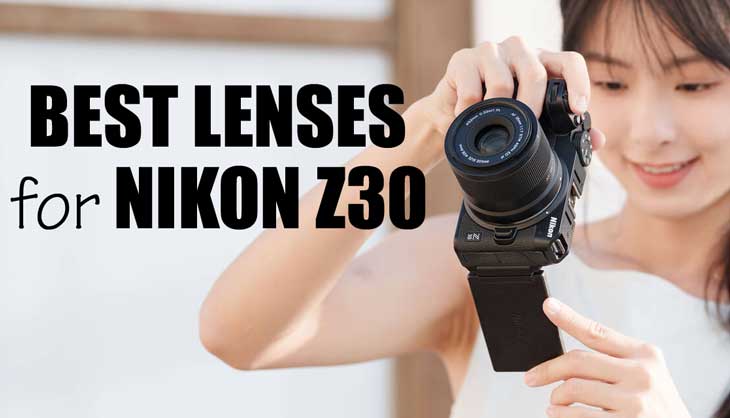
what are the best lenses for the Nikon Z30? below is the list of the best lenses available for the Nikon Z30 camera in 2025. We have selected some of the best lenses, which are affordable and high quality. let’s explore this list of the best lenses for the budget vlogging camera.
1. The Best Wide-angle lenses for Vlogging
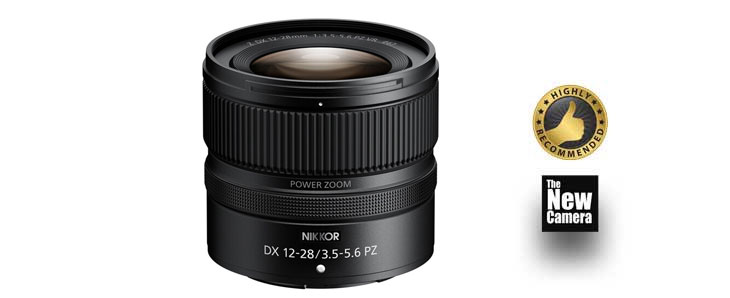
check out the latest deal on Nikon 12-28mm lens at B&H Store and Amazon.com
Nikon NIKKOR Z DX 12-28mm f/3.5-5.6 PZ VR Lens (Nikon Z) – Now, why Nikon 12-28mm Lens is the best lens for Vlogging? The best lens for Vloggers that fits our budget pocket is the recently announced DX 12-28mm lens from Nikon. The good thing is this lens features optical image stabilization and a super compact body design. But as we all know, the aperture ranges from f/3.5 to f/5.6, so you won’t witness much depth of field in your images. For that, you have to invest in prime lenses like the Viltrox 13mm f/1.4 lens (mentioned below after this).
Why 12-28mm lens is better than 16-50mm kit lens for content creators? – your normal kit lens is not able to cover the ultra-wide range, that normal kit lens is limited to 16mm, whereas with this lens, you are getting wide coverage up to 12mm. With this, you can later crop as much as you would like. At the same time, if OIS is not that effective, even if you implement in-camera stabilization in the E-VR, Yes you will have to face some crop but that isn’t an issue when ur using a 12mm wide lens.
Since it’s a Nikon native lens the sharpness is at its peak,
of this lens is Very good sharpness in images and a customizable control ring make it well worth the competitive price tag – you’d normally expect to pay quite a bit more for an ultra-wide lens.
Travel Bloggers or Indoor Architecture Photographers
If you are a travel blogger or an indoor architecture photographer, you need an ultra-wide prime lens with a bright aperture that will allow you to produce exceptional-quality videos as well as images.
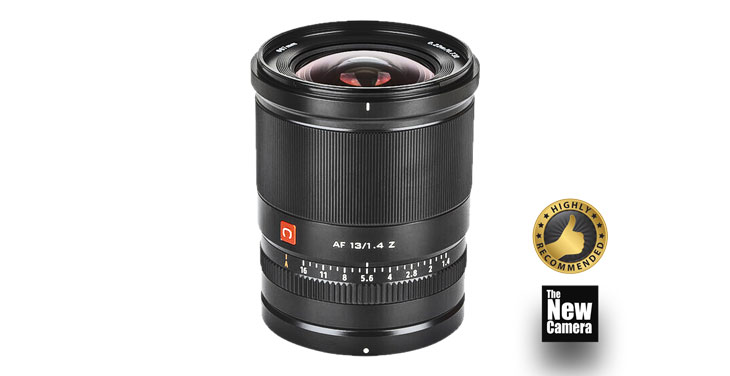
Best Lens for shooting handheld vlogs under any light | Also perfect for shooting landscape and architecture
Get Viltrox 13mm F1.4 Lens from B&H Store and Amaon.com
2. Best PRO Cinematic Lens for Handheld Vlogging with Nikon Z30
Why Viltrox 13mm F1.4 is the BEST Lens among Vlogging Lenses? The Viltrox gives you ultrawide coverage at the very same time F1.4 aperture, and it helps so much in getting cinematic by creating creamy backgorund blur in the background, yes you have to pay a decent price for this lens but the output is phnemenol
One of the best ultra-wide prime lenses with the brightest aperture possible. This lens is highly recommended for travel vlogging or for those who want to capture an entire environment along with themselves. The f/1.4 bright aperture will allow you to capture ultra-low-light footage even in the darkest situations.
So, without a doubt, if you are a travel blogger or an architecture photographer who loves to grab ultra-wide indoor or outdoor architecture shots, the Viltrox 13mm f/1.4 is highly recommended for you.
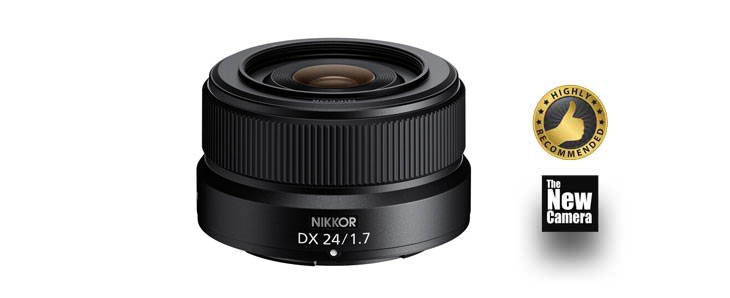
Get the 24mm F1.7 Lens from Amazon.com & B&H Store
3. Best Lens for Street Photography and Talking head Videos for the Nikon Z30 Camera
Why is the Nikon 24mm f1.7 the best budget-friendly prime lens for the Nikon Z30 camera?
The best native prime lens made by Nikon and doesn’t hurt your pocket is, without a doubt, the 24mm f1.7. I highly, highly recommend for the Nikon Z30 camera, and far better than the kit lens that you generally get with your camera. Of course, it doesn’t have the 3x optical zoom that your kit lens has, but instead of, you are getting an f1.7 aperture, which creates a very dramatic background blur, and the resulting output is astonishing.
What makes the Nikon 24mm f1.7 lens perfect for street photography and portraits?
One of the best portrait lenses for the Nikon Z30 camera in budget and made by Nikon itself is the Nikon 24mm f1.7 lens. Now, this lens covers a very vital focal range equivalent to 36mm, which is the most suitable focal length for street-style shooting or classic 35mm focal-length-style content creation.
At the very same time, the 24mm f1.7 lens is highly recommended for friends and family portrait sessions when you want to include a little bit of the surroundings along with your subject.
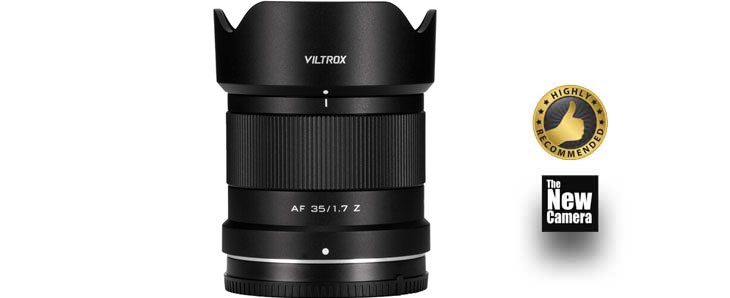
The Viltrox 35mm F1.7 Lens [Amazon.com & B&H Store ] for Nikon Z30 is one of the best BUDGET Lens for Portrait and Talking Head videos
4. The Best Budget lens for portrait photography and talking head videos,
The Viltrox Air Series lens is budget-friendly and of high quality. Viltrox AF 35mm f/1.7 Z Lens (Nikon Z) for the Nikon Z30 Camera. Why is the Viltrox 35mm f1.7 Z Air Series lens the best lens for portrait photography with the Nikon Z30 camera? The big reason behind this is its price; it’s one of the most reasonably priced prime lenses I have ever seen and is available for a 35mm focal length. But, The 35mm f1.7 Z mount lens is made for DX-format cameras, and the equivalent focal length you will be getting is 52.5mm, which is the standard focal length considered for portrait photography by professionals. The aperture that you will be getting is f1.7, which is quite unbelievable for this price point.
So, if you’re looking for the best budget portrait lens for your Nikon Z30 camera, as well as a multipurpose lens that can be used for creating talking videos or shooting your podcast, this is, without a doubt, highly recommended.
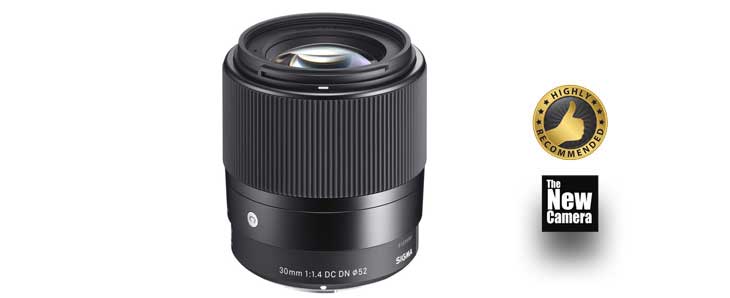
Get Sigma 30mm F1.4 Lens from B&H Store and Amazon.com
5. Best PRO Lens for Portrait Photography and Talking head videos
The Sigma 30mm f/1.4 – Why Sigma 30mm f1.4 is the best professional portrait lens for Nikon Z30?
Without a doubt, the Sigma 30mm f1.4 comes at a price, but at the very same time, the output you get from this lens, specifically while using Sigma optics at its maximum aperture, is completely phenomenal and out of the box. So if you can get this lens, specifically for interested portrait shoots, you will feel blessed to have this combo.
When budget doesn’t matter that much and you are looking for a perfect lens for portrait photography with your Nikon Z30 camera, at the very same time, if you want to create videos from a distance, like you’re sitting in your office room chair and you’re putting your camera approximately 4–5 feet away, then in that particular scenario, the Sigma 30mm f1.4 is one of the best lenses ever made for the Z-mount Nikon Z30 camera. The effective length that you will be getting is 45mm, which is somehow very similar to a standard portrait focal length, and the aperture is f1.4. The feel that you will be getting from this lens will be out of this class, with a very creamy background blur effect when used at its maximum aperture.
For wedding photographers, you need two types of lenses:
- A portrait prime lens for pre-wedding shoots and capturing candid moments.
- A coverage lens to document the entire event and rituals.
Portrait Lens for Weddings
The Sigma 30mm f/1.4, discussed earlier, is excellent for portraits and candids. If ur Lookin for a budget solution then Viltrox AIR 35mm F1.7 is the best as well as the Nikon 24mm F1.7, u can select any of them as per ur like.
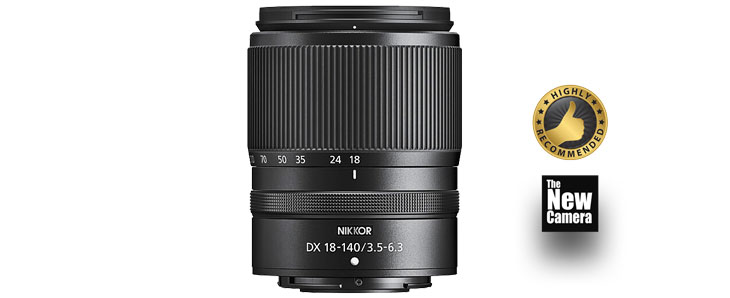
Best coverage lens for wedding photographers | Get 18-140mm Lens from Amazon.com | B&H store
6. Best lens for Wedding Photography and TRAVEL
Nikon 18-140mm: The Best All-Rounder Lens for Nikon DX Format Cameras
The Nikon 18-140mm is one of the best and most versatile all-rounders available for Nikon DX format cameras. This multipurpose lens offers more coverage than the traditional 16-50mm kit lens, making it a fantastic upgrade for those seeking flexibility.
Which Is the Best Wedding Photographer’s Lens for a Nikon Z30 Camera?
The Nikon 18-140mm is the best coverage lens for wedding photography. As we all know, you typically need two lenses for wedding photography: one for portraits and the other for capturing traditions and moments throughout the wedding day. The 18-140mm is one of the sharpest lenses in the DX format lineup and is highly recommended for wedding photography.
The Best Travel Lens or All-in-One Lens for Nikon Z30 Camera
The Nikon 18-140mm lens covers a wide range and provides approximately 8.3x exceptional zoom. Beyond this lens, there are few options I can recommend for traveling as an all-rounder lens, apart from the standard kit lens.
However, if you’re looking for an alternative to the 18-140mm lens for travel, the Nikon 24mm f1.7 lens for DX format cameras is an excellent option. It works perfectly as a street photography lens and is ideal for low-light situations, giving you flexibility when traveling.
However, for cinematic videos, prime lenses are always preferred over zoom lenses with variable apertures.
7. Budget Wildlife Photography Lens
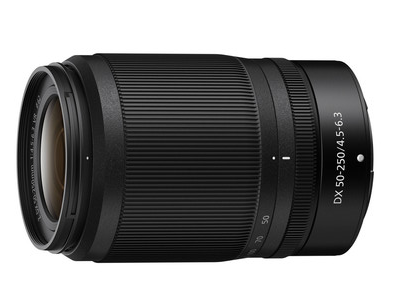
Get DX 50-250mm Lens from Amazon.com and B&H Store
The most affordable wildlife photography lens for beginners and entry-level users who don’t want to spend thousands of bucks on a lens should buy the DX 50-250mm f/4.5-6.3 VR lens.
This is a very small, lightweight, and sharp lens, handy for beginners. It also has a quiet and fast autofocus system.
8. Best DSLR lens for Nikon Z30
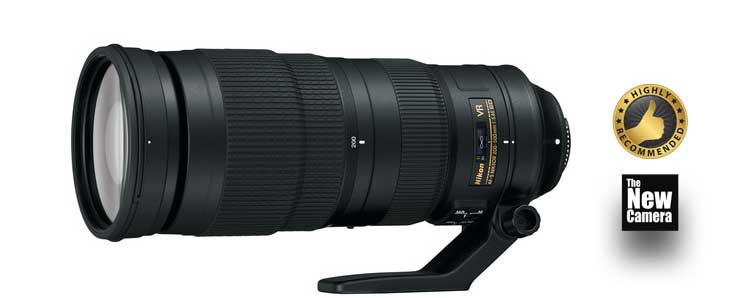
Get 200-500mm f/5.6E ED VR Lens B&H Store and Amazon.com
Nikon AF-S NIKKOR 200-500mm f/5.6E ED VR Lens
This lens is a DSLR lens and needs an FTZ adaptor to work with the Nikon Z30 camera.
This is one of the best budget wildlife photography lenses available, with such a high resolving capacity that it can even resolve the Z9 or Z8 40+ megapixel sensors.
Autofocus is really very fast and supports the latest generation eye autofocus tracking in mirrorless cameras. At the same time, you have a constant f/5.6 aperture throughout the zoom range.
This gives you an amazing creamy background blur if you shoot portraits at 200mm or 300mm with this lens.
I have also used the Tamron 150-500mm lens, but I was not satisfied with the optical performance I was getting with the Z-mount mirrorless lens made by Tamron. After using it for a while, I switched back to the AF-S 200-500mm with my Nikon ZF camera.
So, I will recommend this lens as one of the most budget-friendly wildlife photography lenses available, giving you 500mm reach. You can easily capture birds in flight at a very reasonable cost.
If you can get this lens, it would be the best investment you’ve ever made in a wildlife photography lens within your budget.
Support us – Use or affiliate link Amazon.com | B&H Store for the next purchase u make – it helps us 🙂
Update Log: This Guide was updated on 19 April 2025 by thenewcamera.com team of editors
By admin, on December 26th, 2024
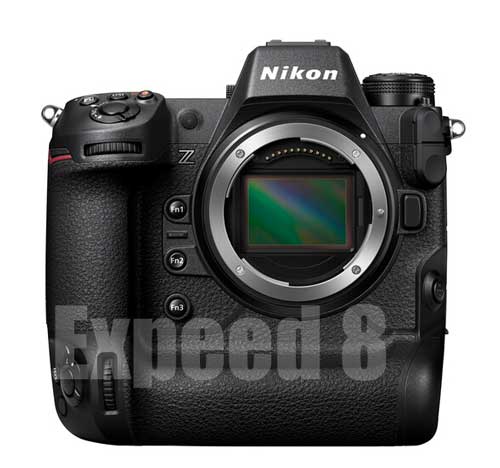
According to the latest famous source from the website nikoneye, the upcoming Nikon Z92 camera is expected to carry a 61-megapixel stacked CMOS sensor from Sony, which is currently being used inside the Sony A7R5 camera. This information isn’t correct, as per the information we have the Nikon Z9 II uses an Expeed 8 image processor and the same 45Mp Stacked CMOS sensor, expected announcement Q4 of 2025.
But just before that, we published an article about upcoming Nikon cameras of 2025, and in that article, we very clearly mentioned that
- the Nikon Z9 II camera will have an improved Expeed 8 image processor, but the sensor will remain the same 45-megapixel stacked CMOS sensor which was first announced with the Z9 in the year 2021.
- Not only that, the same source mentioned that the Nikon Z5 II camera is coming very soon, with the most probable announcement due in the month of January 2025, and shipping will start sometime in the months of February or March.
Support us – Use or affiliate link Amazon.com | B&H Store for the next purchase u make – it helps us 🙂
Follow us on our social pages FACEBOOK | TWITTER | INSTAGRAM to get live Camera News +
website mentioned – Nikoneye
By admin, on December 26th, 2024
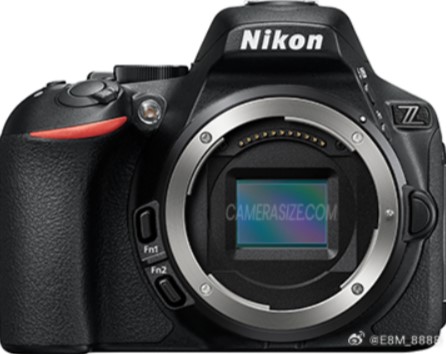
So, let’s talk about the Nikon ZDc rumour, which is now floating across various platforms, specifically from the E88_88 source. This type of rumour indicates that Nikon may introduce a hybrid DSLR camera specifically targeting beginners, it will be an attempt to cover the 200D Mark II / 200D market share. The camera is still hugely popular in the Asian market, and many content creators are still using Canon’s 200D series cameras. It suggests they might announce a hybrid DSLR camera with a ZDc name.
TNC take: This rumour is not correct in any way. DSLR makers have tried their best since 2018 to establish themselves in the mirrorless market. Nikon is doing very well with its mirrorless offerings, starting with the baseline Z30 and ending with the Z9 camera. So, I don’t think this particular rumour sounds logical to me.
Nikon Upcoming Camera 2025
Follow us on our social pages FACEBOOK | TWITTER | INSTAGRAM to get live news + Nikon Rumors 24X7
source E88_8888
By admin, on December 23rd, 2024
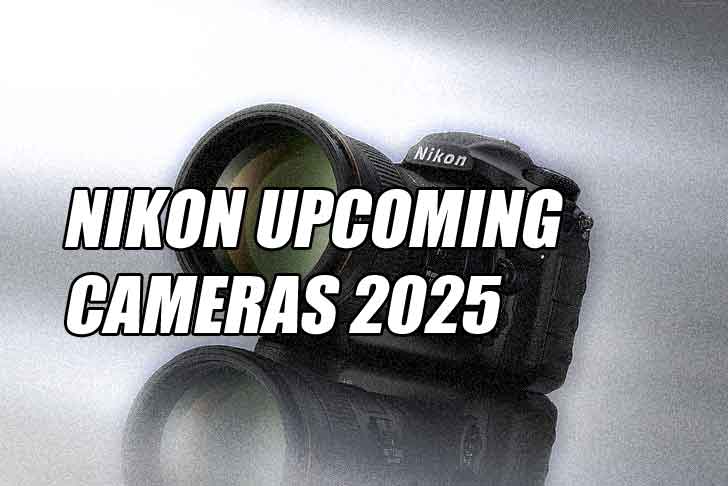
List of upcoming Nikon cameras for 2025. Now, let’s discuss what’s next from Nikon, as per the latest rumors. Due to the recent developments in AI Processing Units and software-based technology, Upcoming Nikon cameras now pushing the performance limits to a new standard. Not only about the upcoming Mirrorless camera, We have strong hints that Nikon is working on a RED-style Cinema camera too, other than that Nikon Z9 Mk II, Nikon Z7 III, Nikon Z30 II, and more…, coming in the year if 2025. So, let’s start with the Nikon Z30 II
Canon Upcoming Cameras 2025 | Sony Upcoming Cameras 2025
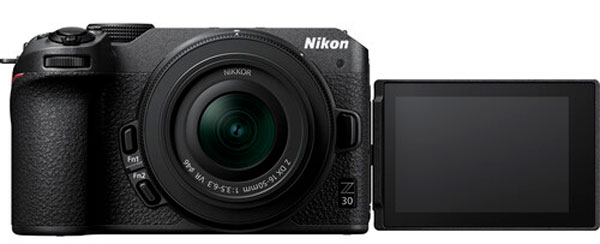
1. Nikon Z30 II
Nikon Z30 Mark II or Nikon Z30 II is expected to feature the same Expeed 7 image processor and the same 20.9 MP sensor of the Nikon Z50 II camera, with the following set of expected core specs.
So there you see, possibilities exist, and now let’s discuss these cameras’ expected core specifications.
Possible Specs of the Nikon Z30 Mark II
- 20.9MP DX-Format CMOS Sensor
- EXPEED 7 Image Processor
- UHD 4K 60p Video (Crop Mode) with 125-Minute Limit
- Full HD 120fps Slow-Motion Recording
- 10-Bit Internal Recording via HDMI
- Hybrid AF with Enhanced Eye and Face Detection
- Subject Detection for 9 Types (animals, vehicles, etc.)
- 3″ Free angle Touchscreen LCD (180° for vlogging)
- Built-in stereo Mic with Wind Noise Reduction
- 3.5mm External Mic Input
- New Tally Lamp for Recording Indicator
- Wi-Fi and Bluetooth for Seamless Connectivity
- ISO 100-51200
- Up to 11 fps Continuous Shooting
- Vlog-Friendly Design with Selfie Controls
Nikon Z30 Mark II Arrival Date [Expected Timeline]
Based on Nikon’s product update trends and the typical lifecycle for entry-level models, the Nikon Z30 Mark II announcement is likely to happen around on Q4 of 2025 or Q1 of 2026.
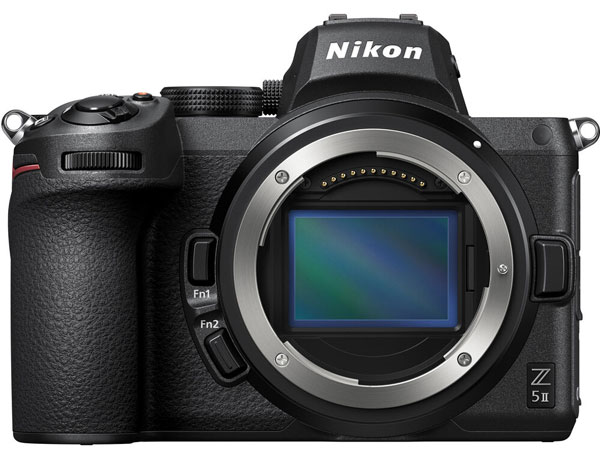
Update: Nikon Z5 II Announced
2. Nikon Z5 Mark II
Finally, as we have predicted, the Nikon Z5 II camera has been officially announced. Check out the latest post related to the Nikon Z5 II camera
Nikon Z5 II – All the latest updates
That is interesting and if it arrives, specifically with IBIS then for sure Canon R8 will get a very tough competition from Z5 II.

3. Nikon Z9 II
Nikon Z9 II will get the Expeed 8 image processor, image processor will remain the same. That means we will get a massive update in the processing power of the existing Z9 camera, which will directly affect the autofocusing algorithms, specifically 3D object tracking, continuous shooting speed, video recording resolution, and frame rate. So for sure, we will have a massive update in the camera’s core specifications. The camera is expected to arrive in the fourth quarter of 2025.

4. Nikon Z7 III
the Nikon Z7 Mark III will mark its presence sometime in August to November 2025. As per the latest rumors, Nikon will bring a higher resolution sensor the the Z7 III series, probably a 61 MP sensor from Sony or a 67MP sensor from Towerjazz, Nikon has been working with 67Mp sensor Prototypes for more than 2 years. Some rumor mills believe the upcoming Nikon Z7 III will get the same 45.7 Mp stacked CMOS sensor, but that is not true. The priority of Nikon is to keep the Z7 III in competition or better than the Sony A7R series, specifically in terms of image quality and dynamic range.
Nikon Z7 III Specification
- 61 + MP FX-Format BSI CMOS Sensor
- 8K30p and 4K60p Video, 10-bit Internal, ProRes RAW
- Up to 20 fps Max Shooting
- 493-Point AF
- AI-Based Subject Detection
- 3.2″ 4-Axis Tilting Touchscreen LCD
- Dual UHS-II SD Slots
- 5 GHz Wi-Fi and Bluetooth
Nikon Z7 II is of the most outdated camera of Nikon Z mount along with the Nikon Z5, so Nikon Z7 III update will sure arrive in 2025 without a doubt, if we will get any updated related to the same will update you asap.

5. Nikon Cinema Camera
RED’s R&D teams worked for many years to achieve their current level of perfection. Now, with Nikon’s acquisition, it’s easier for Nikon to transfer these technologies and allow their Z-Mount R&D division to benefit from them. At the same time, Nikon will also share their advanced autofocus algorithms with RED, aiding in the development of active Z-Mount-based cinema cameras in the near future.
In past, RED partnered with TowerJazz for their cameras’ 20-megapixel global shutter Super 35mm sensors, offering advanced video capabilities. This partnership helped RED stay ahead of other consumer and mid-level cameras.
Nikon and TowerJazz Collaboration isn’t new, Nikon and TowerJazz have a long-standing relationship, with TowerJazz relying on Nikon for equipment and Nikon using TowerJazz sensors in their DSLRs and mirrorless cameras. This collaboration is evident from the companies’ shared presentation materials.
Potential Release of KOMODO or Raptor with Zmount:
A RED camera with Nikon’s Z-mount. We can expect upcoming RED Komodo-X variants, like Komodo Z to feature ACTIVE Z-mount support. Since the face detection system is already enabled with the Canon RF mount, if Nikon introduces a Z-mount, we can be sure that the face detection autofocus system will be enabled either via an app or directly in the camera.
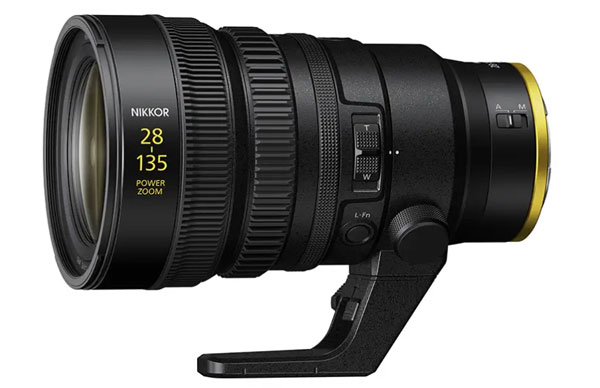
What to Expect – So in the future, we will see 12-bit internal video recording capabilities and global shutter sensors coming to Nikon Z-mount mirrorless cameras. At the same time, upcoming RED cameras will feature an active Z-mount with full-time autofocus support.
Arrival Date of Nikon Cinema Camera – We would love to have a development announcement from Nikon on or before Q4 of 2024. although they have already announced the development of their first cinema lens 28-135mm for Z mount.

6. Nikon Z90
According to the latest rumors, the 33 MP sensor prototype is expected to be approved for production. But at the same time, Nikon is now very concerned about market demand and is not just throwing up every mirrorless line in front of users. If they see very clearly that there is market demand, then they will surely announce the Nikon Z90 camera.
Nikon Z90 Latest Rumored Specification
- 33.4 Mp DX-Format CMOS Sensor
- EXPEED 7 Image Processor
- UHD 4K60p/Full HD 180fps Video Recording
- 5-Axis In-Body Vibration Reduction
- Focus-Point Stabilization
- AI AF, Improved 3D Autofocus, 9 Subject Detection
- Pre-Release Capture, 15 Mechanical Shooting
- Dual UHS-II SD Slots
- 5 GHz Wi-Fi and Bluetooth
Nikon has lowered the price of full-frame Z cameras, starting with the Z5 and Z6 II, as well as the ZF. All these full-frame cameras are in a reasonable price range. The main intention of the brand right now is to upscale the user experience to a frame sensor as much as possible. So, they can have as many options as possible in terms of Z-mount bodies and lenses.
So, we do not doubt the prototypes being tested in Nikon’s lab, and the Nikon Z90 will surely be announced in the near future. However, only time will tell when the marketing team gives a green flag to these prototypes.
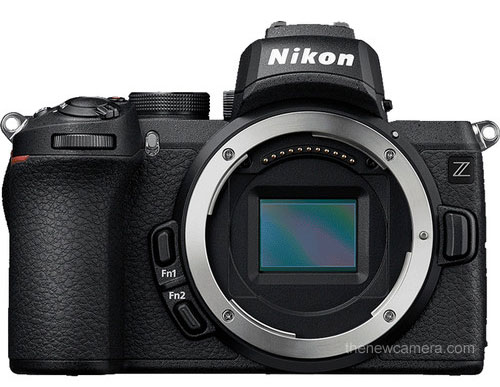
7. Nikon Z80
There is very little chattering about the Nikon Z80 camera. Of course, if it arrives, it will be somewhere in between the Z90 and the Z50 Mark II camera. If you have to make an educated guess for a core specification of the Nikon Z80, then it will have a 24 MP DX partially stacked BSI CMOS sensor, paired with active pixel image stabilization, and 4K 60 FPS recording without any crop.
But again, the information related to a concept Z80 camera is very less. As soon as we get any information related to that, we will be updating you soon.

8. Nikon Z4
Nikon Z4 camera rumor: Back in 2022, we spotted a Nikon compact full-frame release camera body with very minimal controls. No EVF was included in the back to reduce the production line cost, and at the very same time, a tiny display was visible on top of the body. So, from this patent, it was very clear that Nikon is very mindful about developing a super budget full-frame body that will allow users to get a full-frame camera at a super affordable price range.

We received this theory from a source we trust a lot, but at the very same time, we decided not to publish it when we received it at that time, since at that time it didn’t look logical to me, but finally I am publishing it here
According to the source, Nikon will surely announce this Z5 II body next year (which means 2025). But at the very same time, they are also thinking parallelly to put the core specifications of the existing Z5 Mirrorless camera, paired with the Expeed 7 image processor, in a super budget body. By removing the EVF, the production line cost will go down, and with the video-core specifications and autofocus performance of the camera being improved, Nikon will position it as an entry-level Fullframe camera.
Also, see – Upcoming Canon Cameras 2025
This post was updated on April 21, 2025, by thenewcamera.com team Follow us on our social pages FACEBOOK | TWITTER | INSTAGRAM to get live news + Nikon Rumors 24X7
By admin, on December 22nd, 2024
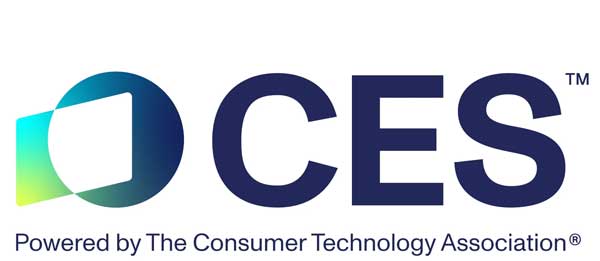
The CES 2025 event is scheduled to happen from January 7 to January 10 in Las Vegas. Different types of tech brands come from across the globe to showcase their innovative products at this particular event.
Now, from Nikon this year, Nikon will showcase an Innovative in-vehicle camera system co-created by Nikon and Mitsubishi Fuso to be exhibited at CES 2025 and we are expecting they will also showcase their recently announced Nikon Z63 and Z50 2 cameras, and we may witness some of the cinema camera prototypes that Nikon is working on.
Like every year, Canon will be showcasing its compact prototypes at the event.
During the CES 2025 event, Sony has an extensive presence and has booked multiple halls. At the same time, we are not sure, since Alpha Universe and other websites haven’t listed any of their events in the January month of their scheduled calendar.
Apart from these three camera makers, we also have Fujifilm Corporation attending the event. We are expecting the presence of the Fujifilm medium-format cinema camera prototype that we saw a few weeks ago. Upcoming Fuji Cinema Camera Explained in 15 Points | Fuji Cinema Camera A Closer Look
Panasonic has also booked multiple halls since they have a huge presence in the consumer electronics market. At this same time, we are not able to find any registered Booth name with Lumix, which is the brand name used by Panasonic for their mirrorless cameras. It will be interesting to see whether Panasonic Corporation will allow the imaging division, Lumix, to showcase their products in their booked halls or not, so we have to wait for that.
We will share more information if we get any updates related to other camera makers and upcoming products.
CES 2025 – Nikon Booth Details
LVCC, Central Hall – 19504
Nikon in a recent press release mentioned
“Innovative in-vehicle camera system co-created by Nikon and Mitsubishi Fuso to be exhibited at CES 2025”
Camera with an optical lens system with telephoto and wide-angle functions to be exhibited at CES 2025
Nikon Corporation (Nikon) will exhibit an innovative in-vehicle camera system co-created with Mitsubishi Fuso Truck and Bus Corporation (MFTBC) at CES 2025. The camera features an optical lens system with both telephoto and wide-angle lens functions, enabling users to see far away and also check their periphery at the same time.
We will have our camera gear for the rest of the booths. Although I was expecting to see a cinema camera working prototype in the show, let’s hope for the best.
Canon Booth Details
Booth – Venetian Expo, Hall G – 61101
Back in 2024, Canon displayed several prototypes of their working compact models [Canon’s previous year cameras displayed at the CES show]. Now we are waiting for 2025, and I do hope and expect we will see attractive prototypes from Canon at this CES 2025
SONY Booth Details

More than two halls of space are booked for Sony and their subsidiary divisions, but at the same time, we don’t have information on whether Sony’s imaging division is also attending CES 2025 or not.
Sony official website ALPHA universe haven’t listed any Sony ALPHA imagine event in the month of January 2025
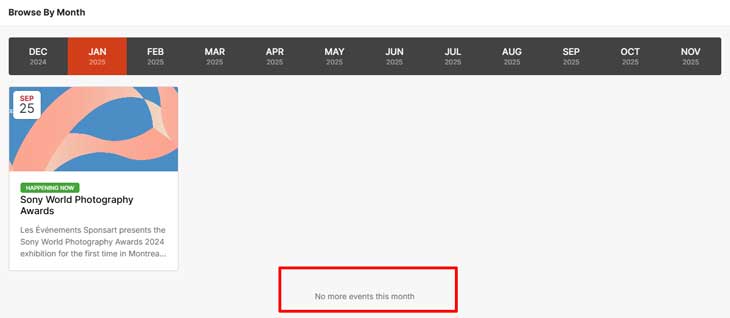
FujiFilm North America Corporation
Booths – LVCC, North Hall Mtg Rms – N104
Panasonic Booth Details
Booth –
LVCC, Central Hall – 16605
LVCC, North Hall Mtg Rms – N245
LVCC, North Hall Mtg Rms – N246
LVCC, North Hall Mtg Rms – N247
Venetian, Lvl 4 – Zeno 4804
Stay tuned, Stay updated
Get LIVE RUMORS –> FACEBOOK | TWITTER | INSTAGRAM to get live Camera News
By admin, on December 11th, 2024

Nikon Z9 will get the Expeed 8 image processor. That means we will get a massive update in the processing power of the existing Z9 camera, which will directly affect the autofocusing algorithms, specifically 3D object tracking, continuous shooting speed, video recording resolution, and frame rate. So for sure, we will have a massive update in the camera’s core specifications. The camera is expected to arrive in the fourth quarter of 2025.
List of FX Bodies to be announced with Expeed 8 Image processor in the near future
- 2028 — Z50 III, Z6 IV
- 2027 — Zf II [Late 2026 or early 2027], Z8 II
- 2026 — Z30II [Q1 of 2026 or Late 2025]
- 2025 — Z9 II, ZfcII (bold indicates likely EXPEED8 cameras)
- overdue: Z5II, Z7III
If we closely study the announcement pattern of Nikon then after the Z9 II, the most eligible FX-format Mirrorless body is the Nikon Zf II waiting for an update.
Stay tuned will will bring more updates soon.
Follow us on our social pages FACEBOOK | TWITTER | INSTAGRAM to get live Camera News + Nikon Rumors 24X7.
source
|
KEEP THIS BLOG ALIVE - Support New Camera Buy Canon Lenses, Buy Music CD or Digital Camera at amazon it helps this site, and you do not pay anything extra, it is just a way to help support this site.

|































